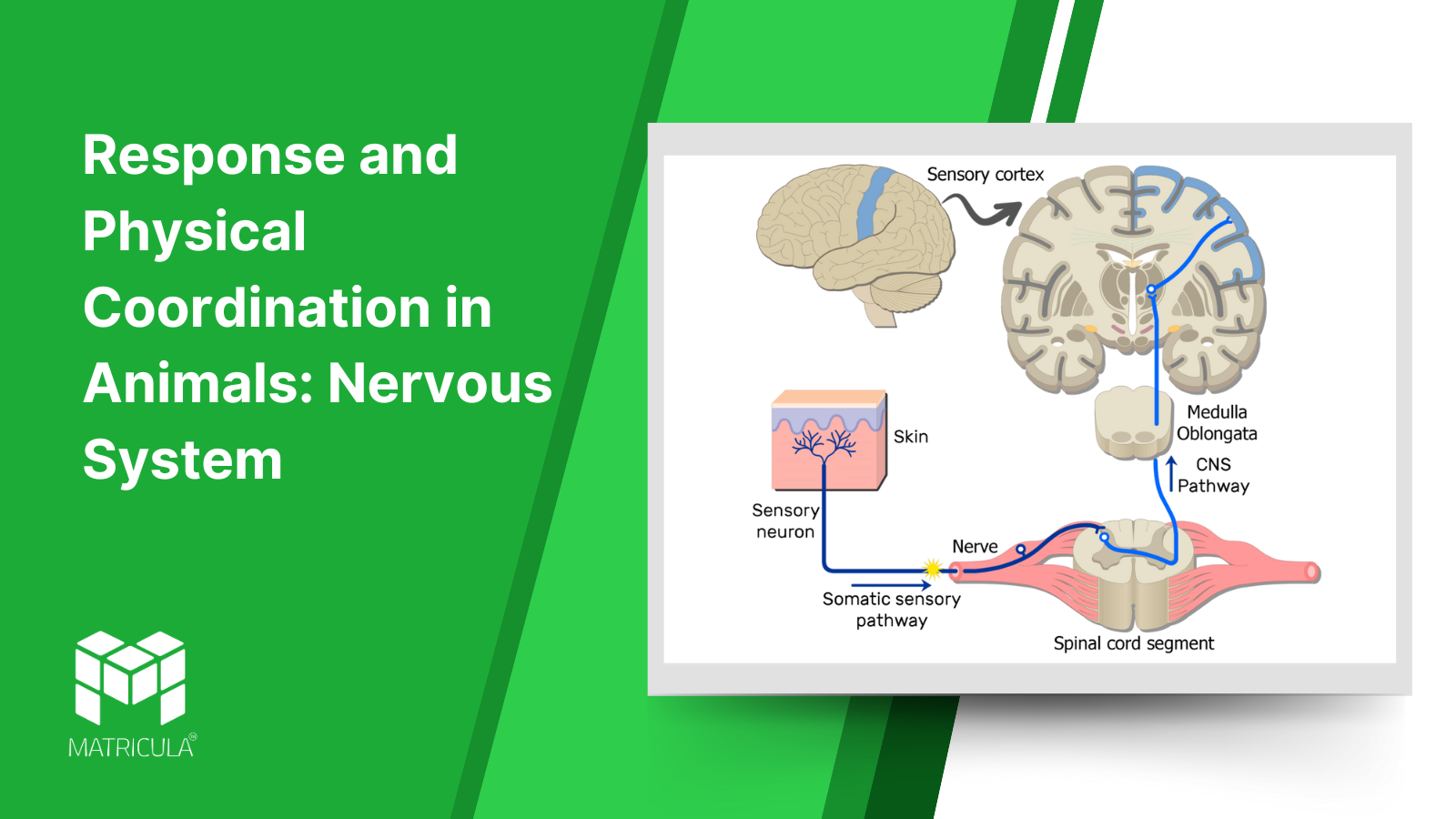Introduction to Nervous S Response and Physical Coordination in Animals: Nervous System
ystem
The nervous system is a vital part of an animal’s body that enables communication between different organs, ensuring proper coordination and response to stimuli. It regulates voluntary and involuntary actions, maintaining internal stability and responding to environmental changes.
Nervous Pathway
The nervous pathway refers to the route through which nerve impulses travel to and from the central nervous system (CNS). This process involves the following steps:
- Stimulus Reception: Sensory receptors detect stimuli such as heat, light, or pressure.
- Transmission of Signal: The sensory neuron transmits the signal to the CNS.
- Processing of Information: The CNS processes the information and determines the response.
- Response Generation: The motor neuron transmits the response signal to the target organ or muscle.
- Action Execution: The target organ or muscle carries out the necessary action.
Structure of a Neuron
Neurons are the structural and functional units of the nervous system. Each neuron consists of three key parts:
- Cell Body (Soma): Contains the nucleus and cytoplasm, which maintain cellular functions.
- Dendrites: Branch-like structures that receive signals from other neurons or sensory receptors.
- Axon: A long, slender projection that transmits nerve impulses to other neurons, muscles, or glands.
Neuroglia
Neuroglia, also known as glial cells, are essential support cells in the nervous system. They do not transmit nerve impulses but play a crucial role in:
- Providing structural support to neurons
- Supplying nutrients and oxygen to neurons
- Protecting neurons from pathogens
- Removing waste materials
Types of Neurons
Neurons are categorized based on their function:
- Sensory Neurons: These carry sensory information from receptors to the CNS. They detect stimuli such as touch, temperature, and pain.
- Motor Neurons: These neurons carry signals from the CNS to muscles or glands to trigger a response.
- Interneurons (Association Neurons): Located within the CNS, these connect sensory and motor neurons, facilitating communication within the system.
Conclusion
The nervous system plays a fundamental role in coordinating bodily functions and responses. Understanding the nervous pathway, neuron structure, neuroglia, and neuron types is crucial for comprehending how animals maintain balance, react to stimuli, and survive in their environment.


